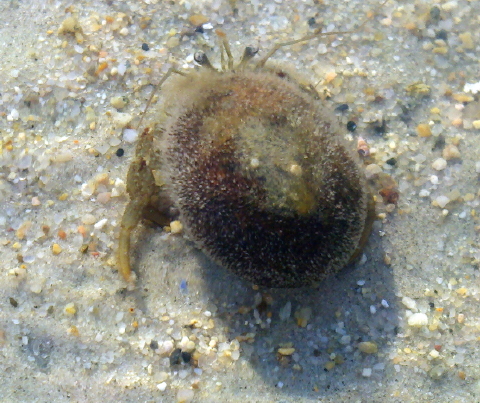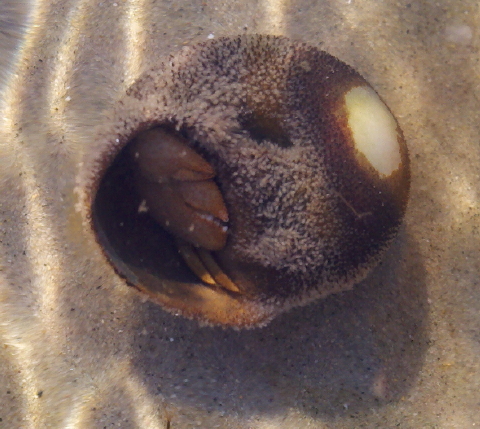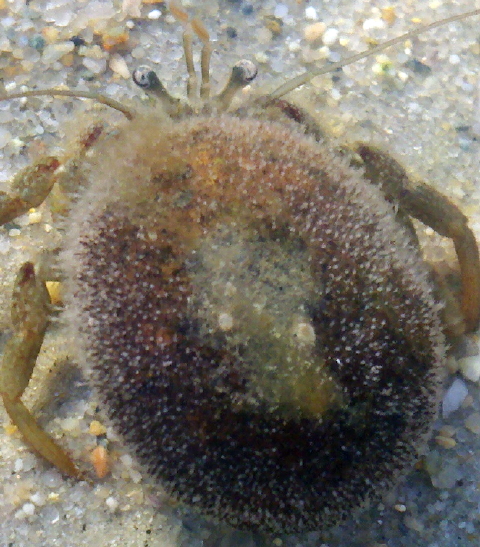Flat-Clawed Hermit Crab (Pagurus pollicaris)
The tidal flats in Sippican Harbor off Buzzards Bay warmed enough today for flat-clawed hermit crabs to become active. This morning a crabby hermit scurried along the shallows at Silvershell Beach in Marion in a small moonsnail shell.Â
Flat-Clawed Hermit Crab (in Moonsnail Shell)
These vagabond crustaceans adopt abandoned shells of snails and whelks. But of course, they move quite differently than the snails and whelks who formerly occupied these shells. As a consequence, a portion of its new home constantly drags along the tidal flats and creates a telltale “bald” or shiny spot, which can be easily spotted in the photograph above. With the shell flipped upside down, you can see where its new home rubs against the bottom.Â
Besides the common name “Flat-Clawed Hermit Crab,” these animals are also called “Broad-Clawed Hermit Crabs.”Â
Meet the Crabby Hermit
Okay. Perhaps the flat-clawed hermit crab lacks a little something in the cuteness category. But Turtle Journal loves these seemingly comical critters; and when you get the chance to see one outside its shell, we believe they display an adorably playful presence. We rescued this particular hermit crab in October. It had been residing in a whelk shell that was swooped up by a gull that dropped it from considerable height just as we happened on the scene.  The force of the crash on the concrete boat ramp smashed the whelk shell and trapped the hermit crab inside.
Crabby Hermit Finds a New Home
We decided to give Nature (and this crabby hermit) a helping hand by first freeing it from the crushed whelk shell, and then offering a selection of empty whelk shells for it to choose a new home. The video clip above shows our crabby friend adopting its new abode.
Flat-Clawed Hermit Crab
Today’s specimen in its moonsnail shell was much smaller. This photograph with the barnacle in the upper left gives a good sense of the hermit crab’s size.
Flat-Clawed Hermit Crab with Snail Fur
Hermit crab shells provide habitat for snail fur (Hydractinia echinata). This hydroid grows in colonies on snail shells that have been taken over by hermit crabs. According to Marine Life of the North Atlantic by Andrew J. Martinez, “It is believed that the stinging cells of the hydroids protect the hermit crab against some predators.” The image above show the polyps in full glory.



